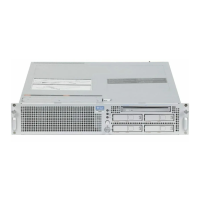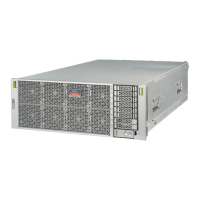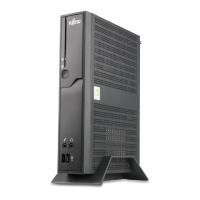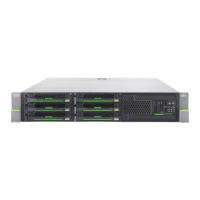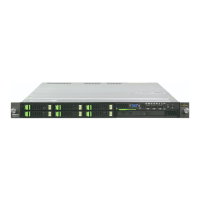2-148 SPARC Enterprise Mx000 Servers XSCF User’s Guide • January 2012
Domain
Configuration
Divides hardware resources in this system into independent software-based units.
Partitioning is performed with XSCF as follows:
1. XSBs are defined with each consisting of a CMU or MBU and an I/O unit divided by
software. (In M4000/M5000 servers, there will be I/O on only half of the XSBs.)
2. Each XSB is handled as an LSB so that it can configure a domain and be assigned a
number (LSB number). Furthermore, XSCF can define LSB resources in detail.
3. The domain operates with the LSB resources and the LSB number.
Domain ID (DID) ID assigned to a domain.
Domain Component
List (DCL)
This is a list of domain configuration information. The DCL represents the hardware
resource information that is set for each domain and each LSB belonging to a domain. It
can be specified and displayed by setdcl(8) and showdcl(8), respectively.
Memory mirror
mode
In this mode, a PSB has two memory units, one mirroring the other. Saving the same data
in the separate memory units improves data security.
DIMM (Memory) Memory modules on a system board. For details on DIMMs, see the Service Manual for
your server.
Configuration
policy (Note 2)
If an error is detected in a domain in an initial hardware diagnosis, the range of logical
resources to be removed can be specified. The policy determines whether to remove
system boards or separate resources. On M3000 servers, the setdcl(8) command can only
be used to set configuration policy.
Omit-I/O option
(Note 2)
System board (XSB) configuration that prevents a specific domain from logically using
I/O units on a system board. The DR function (Note 1) is enabled with fewer hardware
resources.
(A PCI and LAN driver are prevented from being incorporated into the domain of an
LSB.)
Omit-memory
option
(Note 2)
System board (XSB) configuration that prevents a specific domain from logically using
memory on a system board.
Floating board
(Note 2)
A floating board is designated to be moved easily to another domain. In operation with a
kernel and important I/O on the system board in a domain, and to facilitate the DR
operation of the system board, it is necessary to define the system board so that can be
deleted or moved easily.
This definition is called a floating board option. A system board that lowered priority of
the kernel memory loading by enabling the floating board option is called a floating
board.
TABLE 2-23 Domain Configuration Terms (Continued)
Term Description

